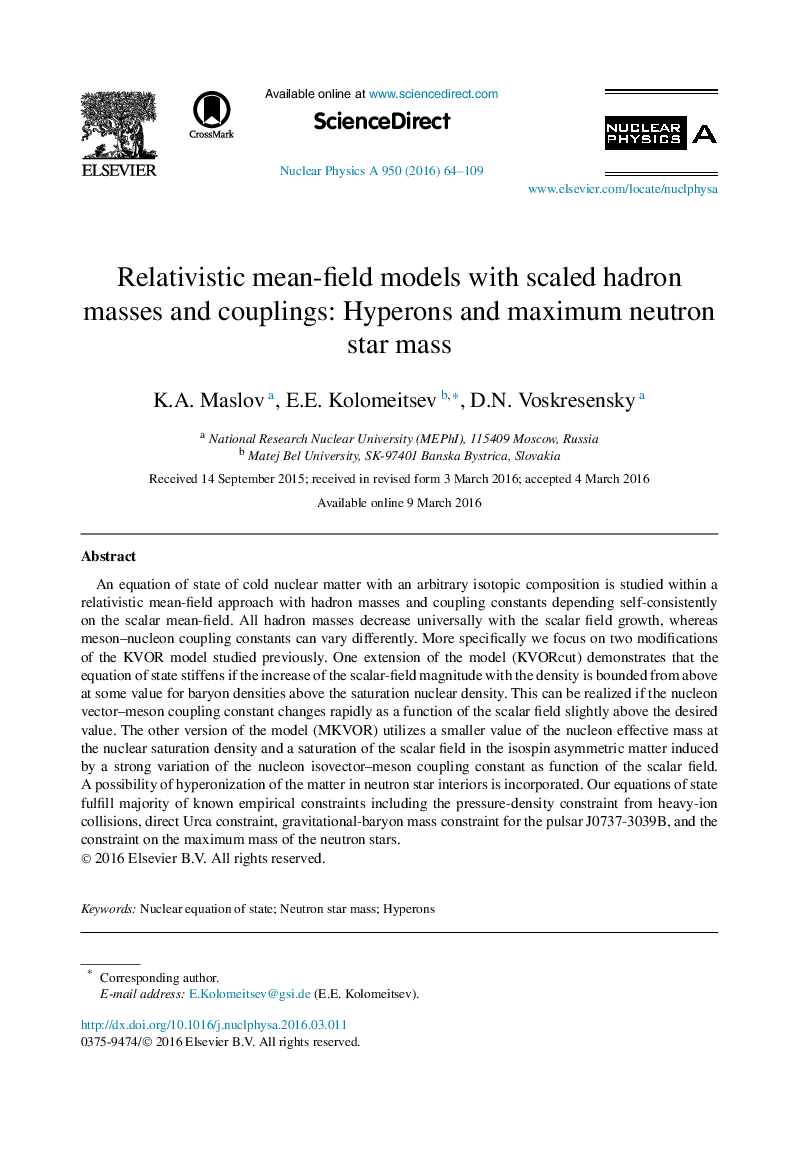| Article ID | Journal | Published Year | Pages | File Type |
|---|---|---|---|---|
| 1836053 | Nuclear Physics A | 2016 | 46 Pages |
An equation of state of cold nuclear matter with an arbitrary isotopic composition is studied within a relativistic mean-field approach with hadron masses and coupling constants depending self-consistently on the scalar mean-field. All hadron masses decrease universally with the scalar field growth, whereas meson–nucleon coupling constants can vary differently. More specifically we focus on two modifications of the KVOR model studied previously. One extension of the model (KVORcut) demonstrates that the equation of state stiffens if the increase of the scalar-field magnitude with the density is bounded from above at some value for baryon densities above the saturation nuclear density. This can be realized if the nucleon vector–meson coupling constant changes rapidly as a function of the scalar field slightly above the desired value. The other version of the model (MKVOR) utilizes a smaller value of the nucleon effective mass at the nuclear saturation density and a saturation of the scalar field in the isospin asymmetric matter induced by a strong variation of the nucleon isovector–meson coupling constant as function of the scalar field. A possibility of hyperonization of the matter in neutron star interiors is incorporated. Our equations of state fulfill majority of known empirical constraints including the pressure-density constraint from heavy-ion collisions, direct Urca constraint, gravitational-baryon mass constraint for the pulsar J0737-3039B, and the constraint on the maximum mass of the neutron stars.
